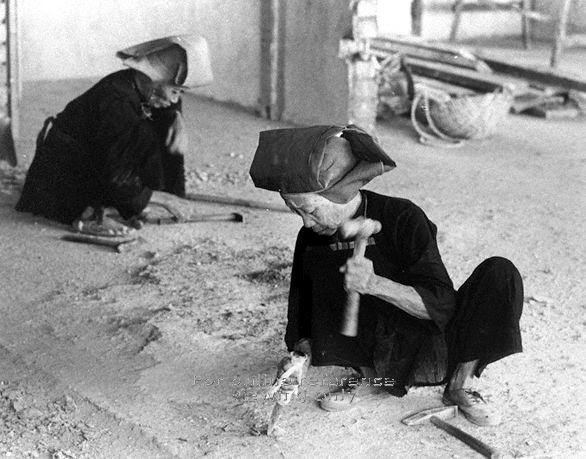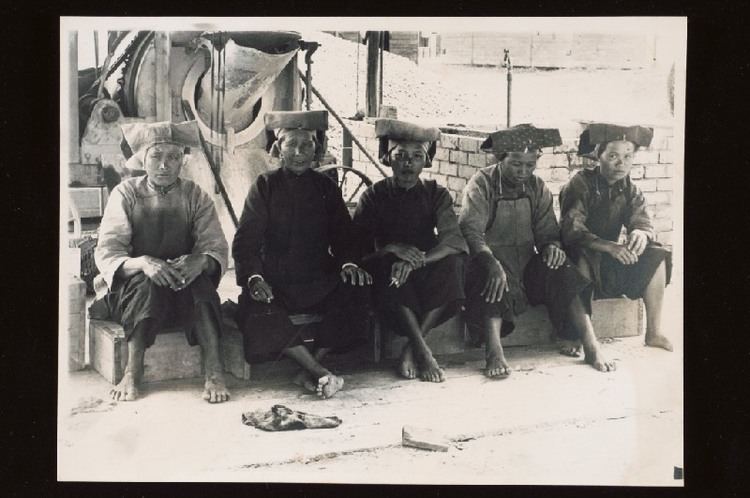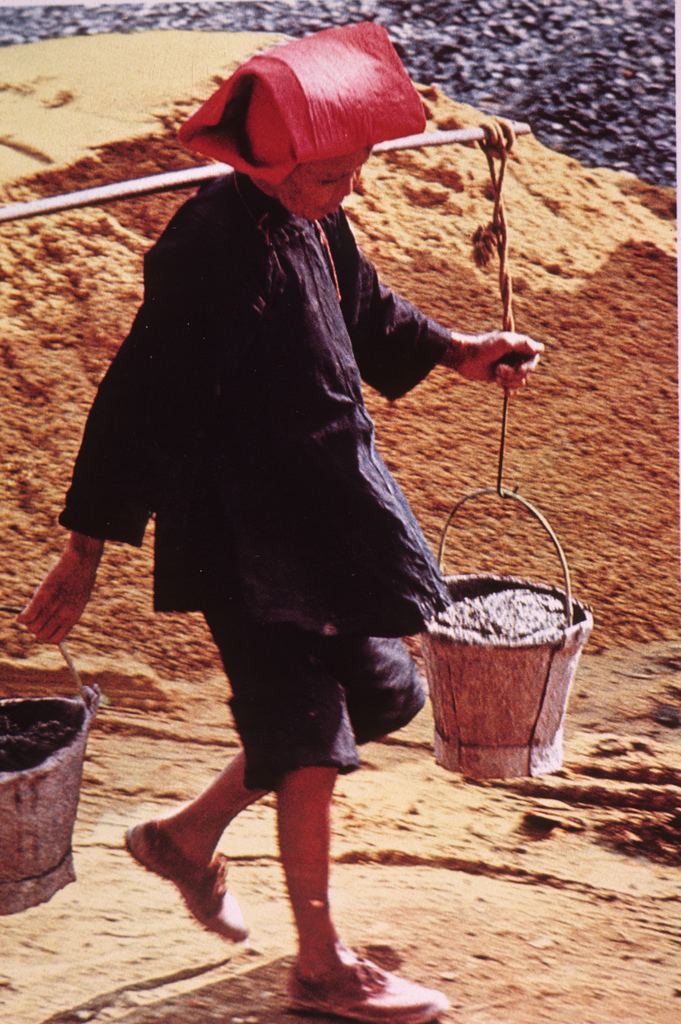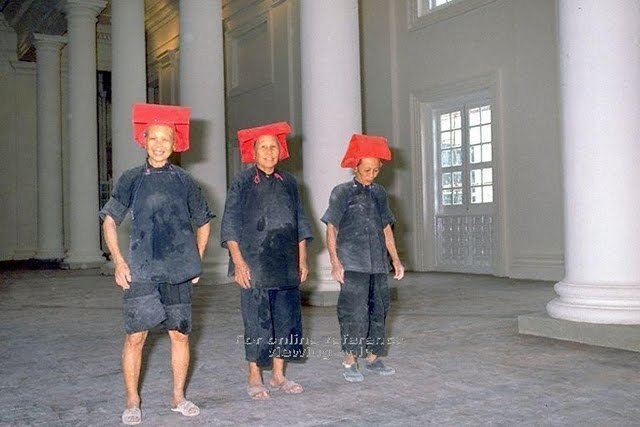 | ||
The term Samsui women (三水妇女; 三水婦女; sān shuǐ fù nǚ) broadly refers to a group of Chinese immigrants who came to Singapore between the 1920s and 1940s in search of construction and industrial jobs. Their hard work contributed to Singapore's development, both as a colony and as a nation. Samsui women are also similar to coolies.
Contents
- Singtel tv our lovepedia episode 18 samsui women
- History
- Name
- Jobs
- Social interactions
- Current status
- Portrayal in media
- References

Singtel tv our lovepedia episode 18 samsui women
History

About 200 Samsui women were believed to have come to Singapore from China between 1934 and 1938, and this continued until 1949 when emigration from China was declared illegal.
Name

Samsui women came from mainly Sanshui (Samsui) in Guangdong (Canton) Province, as well as Shunde and Dongguan. About 90% of them were Cantonese while the rest were Hakka.

In Chinese, these women are referred to as Hong Tou Jin (红头巾; 紅頭巾; hóng tóu jīn), which means "red bandana", because of the red cloth hats they wore at work.
Jobs

Coming to Singapore as cheap labourers in the world, Samsui women worked mainly in the construction industry and other industries that required hard labour. They also worked as domestic servants. They had a reputation of rejecting jobs involving drug (particularly opium) peddling, prostitution, or other vices, even if that meant they sometimes had to live in poverty. They made a lot of contributions to Singapore's early development mostly by building houses and some of them worked at hawker centres manning the stalls there too. Samsui women came to Singapore to work as cheap labourers from 1920s to 1940s. They mainly worked as construction workers. Although they made a lot of contributions to Singapore's early development mostly by building houses, it was very tough. They were given very little. Living conditions were very poor.
Social interactions

Before arriving in Singapore, most Samsui women took vows never to marry, although there have been known exceptions. They lived in cramped conditions with other Samsui women, helping out each other and forming tightly united cliques.
Samsui women also remained in touch with their relatives back home in China, communicating with them frequently through letters. Occasionally, they would send money to them.
Current status
There are fewer than a hundred Samsui women left in Singapore today, all of them in their 80s and 90s. Organisations exist to raise awareness of these women's achievements and contributions to Singapore's development, and their current state. Some of these organisations also strive to provide free travel for the women back to China to visit their relatives before they die. One such organisation was the Sam Shui Wai Kuan Association that took care of the needs of Samsui women
Portrayal in media
The travails of the Samsui women were portrayed in Samsui Women, a television drama series produced by Singapore Broadcasting Corporation in 1986, which has widely been considered as one of the best dramas Singapore has produced over the years. There was also a theatrical play by The Finger Players, called "Samsui Women: One Brick at a Time", held at the Esplanade – Theatres on the Bay.
